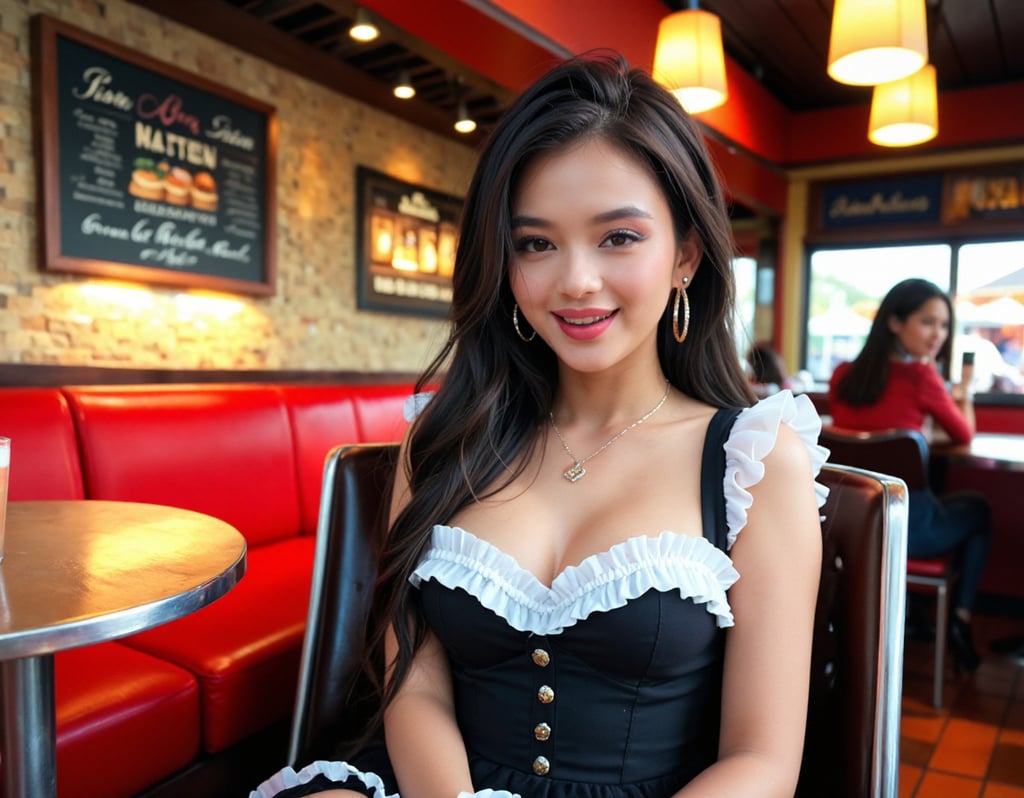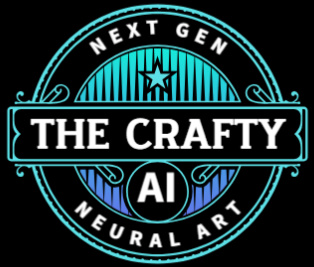The Allure of Perfection: Why AI Models Captivate the Imagination
Explore why AI beauty fascinates men worldwide — art, perfection, and timeless allure in digital form.
GENERATIVE AI
The Crafty AI
10/8/20257 min read


In the digital age, beauty has evolved beyond the boundaries of reality. Where artists once painted muses and photographers sought the perfect light, today’s creators shape beauty through code, pixels, and artificial intelligence. For many men, these virtual figures have become objects of fascination, admiration, and inspiration. They don’t exist to replace real women, nor to objectify them — they exist as art, as symbols of harmony and perfection, and as reflections of timeless aesthetic ideals.
This growing interest in AI-generated models is not just a passing online trend. It represents a deeper cultural and psychological movement — a response to the world around us, to the shifting idea of beauty, and to our longing for visual perfection in an increasingly imperfect time. It’s the next chapter in humanity’s long story of idealizing the beautiful form.
The Pursuit of Perfection
Humans have always been drawn to beauty. From the statues of ancient Greece to Renaissance portraiture, the human form has been celebrated, idealized, and recreated in countless ways. Beauty is part of human nature — not just attraction, but admiration for balance, symmetry, and grace.
AI models are a continuation of that pursuit. They are free from physical limits — their symmetry flawless, their features harmonious, their presence timeless. They can be crafted to embody any ideal, from classic elegance to modern glamour, without ever tiring, aging, or falling out of trend.
For many men, the appeal lies not in escaping reality but in engaging with beauty as a form of imagination. These digital muses offer a space where creativity and admiration intersect — where the viewer can appreciate perfection without judgment, distraction, or social pressure. It’s not about replacing what’s real, but about exploring what’s possible.
Why the Perfect Image Still Matters
In a world overflowing with selfies, filters, and constant media exposure, the concept of beauty has become complicated. Real faces compete with digital enhancements, and ideals change almost weekly. Yet paradoxically, in this visual noise, the appeal of a purely idealized image has grown stronger.
AI-generated beauty represents clarity — a distilled, mathematical form of what the human brain instinctively finds pleasing. Psychologists have long noted that people are naturally drawn to proportion and symmetry. These are universal signals of harmony, and AI happens to excel at producing them.
For many admirers, especially men who collect or follow AI model imagery online, it’s not about comparison or competition. It’s about art. It’s about appreciating design, color, and composition the way one might appreciate a sculpture, a painting, or a classic film still. The perfection of an AI model feels timeless — untouched by the flaws, fatigue, and distractions of everyday life.
The Advertising Legacy: Beauty as a Universal Language
It’s important to remember that AI didn’t invent the concept of perfect beauty — advertising did, decades ago. Since the early 20th century, media and marketing have relied heavily on idealized faces and figures to sell everything from perfume to cars. The “look” of perfection has always been a powerful visual shorthand: clear skin, bright eyes, symmetry, and confidence.
Fashion houses, beauty brands, and lifestyle advertisers all used carefully curated images to evoke aspiration — to make people associate their products with attractiveness, success, and desirability. This formula has worked for more than a hundred years because beauty captures attention faster than anything else. It communicates instantly, emotionally, and universally.
When we see AI models today, we are not encountering a new phenomenon — we are seeing the digital evolution of this long-standing advertising language. The same principles apply: balance, lighting, posture, and expression are carefully refined to evoke admiration and emotional response. AI art simply takes the process further, freeing it from the limitations of photography, budgets, and human imperfection.
For many male viewers, AI models feel familiar because they echo decades of visual conditioning. The aesthetic perfected by magazines and commercials has now been democratized — no longer controlled by brands, but accessible to anyone with imagination and a few creative tools. What was once an exclusive advertising formula is now an art form open to all.
The Modern Contrast: Society, Health, and the Ideal
Modern society presents a complicated relationship with beauty. The rise in sedentary lifestyles, obesity, and screen-centered living has changed how we see our bodies and ourselves. Fitness, nutrition, and aesthetics now compete with convenience and comfort, often leading to cultural fatigue about what “attractive” even means.
In this context, AI models seem to symbolize something refreshing — a return to balance, proportion, and discipline. Their beauty feels effortless, untouched by the distractions and compromises of modern life. For some, this is a reminder of an older aesthetic — one that celebrates vitality and harmony rather than imperfection and irony.
That doesn’t mean AI beauty is “better” or more valuable than real beauty. It simply represents the artistic side of perfection — a reminder of what the human eye has always loved. Just as ancient sculptors carved the ideal form from marble, modern creators use AI to sculpt digital muses from data.
It’s a form of escapism, but a harmless one — an imaginative admiration for design, rather than a critique of reality.
AI Models as Art, Not Objectification
One of the most misunderstood aspects of AI-generated beauty is intent. These models are not created to degrade or objectify women; they are digital artworks — compositions of light, texture, and imagination. The artists behind them are not “designing people,” but expressing moods, styles, and creative vision.
When a creator crafts an AI model, they are doing what artists have always done: translating emotion into form. Whether the mood is confidence, elegance, mystery, or charm, the image becomes a mirror of an idea, not a body. The fascination is aesthetic, not exploitative.
The art world has always celebrated the female form — from Da Vinci’s Mona Lisa to Botticelli’s Venus. AI models are simply the newest extension of that tradition. They merge classical ideals with futuristic technology, showing that the appreciation of beauty is not limited by time or medium.
The Psychology of Admiration
Men, more than any other demographic, have historically connected strongly with visual aesthetics. From portraiture to cinema, they’ve been inspired and moved by visual representations of beauty. But in today’s overstimulated culture, where everything is marketed and politicized, AI models offer something simple: visual admiration without personal entanglement.
Admiring an AI model is not about comparison or fantasy — it’s about appreciation. It’s about seeing art stripped of complexity, allowing beauty to simply be. For many, it becomes almost meditative: a peaceful escape into imagination and balance.
This psychological connection isn’t unhealthy or new. It’s the same instinct that drives people to admire architecture, landscapes, or classic artwork. Humans are wired to seek visual harmony, and AI models deliver it in a pure, undisturbed form.
Why the Trend Keeps Growing
Several forces are driving the explosion of AI-generated beauty online.
First, accessibility. Anyone with basic tools can now generate high-quality images with ease. You no longer need to be a photographer or painter — AI turns imagination into reality in seconds. This has opened the door to thousands of independent creators, many of whom focus on digital modeling as a creative niche.
Second, social media. Platforms like Instagram, Pinterest, and Reddit have become the digital equivalent of art galleries. AI muses are shared, collected, and admired just like photography once was. And because the images are often so polished and cohesive, they naturally attract attention — the very same principle advertising has always exploited.
Third, the collector mentality. Just as art lovers once collected paintings, and photographers built portfolios, digital collectors now curate galleries of AI beauty. Each model, pose, or style becomes part of a personal aesthetic journey — a reflection of taste and artistic preference.
Finally, emotional resonance. Despite being synthetic, AI models can evoke mood, personality, and even a sense of story. They can appear thoughtful, confident, or mysterious, inviting viewers to imagine a life behind the face. This emotional depth is what turns a simple picture into art.
Balancing Fantasy and Reality
Of course, with great power comes responsibility. AI models represent an ideal, not a standard. Healthy engagement with AI art means recognizing it as fantasy — a crafted vision of beauty that complements, not competes with, reality.
Just as people can admire sculptures or film characters without expecting reality to match, the same logic applies to AI muses. Their perfection exists to inspire creativity, not dictate it. The more people understand that distinction, the more AI beauty becomes empowering rather than misleading.
Real beauty remains diverse, imperfect, and deeply human. AI art simply celebrates the idea of beauty — the mathematical poetry of proportion, balance, and light. When appreciated this way, it enhances our cultural relationship with art instead of distorting it.
The Evolution of AI Beauty and Creativity
Looking ahead, the world of AI modeling is only going to expand. The next generation of digital muses will be more expressive, more realistic, and even interactive. They’ll become influencers, brand faces, and storytellers. They’ll appear in short films, advertisements, and digital fashion campaigns — continuing the advertising world’s long tradition of using idealized imagery to capture attention.
What’s changing is ownership. For the first time, individual creators — not corporations — control the image of beauty. Artists can generate, refine, and share their own visions without approval from agencies or editors. AI is redistributing aesthetic power, and that’s what makes this movement revolutionary.
The Cultural Conversation
Every new art form invites controversy, and AI-generated beauty is no different. Some critics see it as unrealistic or superficial, while others celebrate it as digital art’s most exciting evolution. The truth lies somewhere in between.
AI models do not threaten real people; they simply exist on a different plane. Their perfection is symbolic — a study of form, not a judgment of reality. They are the inheritors of a long visual tradition stretching from oil paint to film to Photoshop, and now to generative algorithms. Beauty has always been idealized; the tools have just changed.
In that sense, AI beauty continues humanity’s oldest conversation — about what we find beautiful, why we find it so, and what it reveals about us.
Conclusion: Beauty, Technology, and the Timeless Ideal
So why do men — and many others — prefer images of beautiful AI models? Because they offer something the modern world rarely gives us anymore: peace, admiration, and simplicity. They represent a form of perfection that speaks to ancient instincts and modern imagination alike.
AI models are not replacements for real women, nor are they designed to objectify. They are the modern equivalent of painted muses — digital expressions of beauty, created to inspire, not to compare. Their allure lies in artistry, not in desire.
In a culture where everything feels temporary, AI beauty feels timeless. It reflects humanity’s endless fascination with perfection and harmony — a fascination that has shaped art, advertising, and culture for centuries. From the marble statues of Greece to the glossy ads of Madison Avenue, and now to the glowing screens of AI creation, the pursuit of beauty has never truly changed.
AI is simply the newest brush in humanity’s artistic hand — painting dreams of perfection one pixel at a time.
© 2025. All rights reserved.

